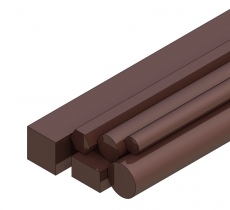
Electrodes
Questions and Answers
Class 13 material is a designation of the Resistance Welding Manufacturers Alliance (RWMA). It describes a pure tungsten material with good conductivity and excellent strength at very high temperatures and forces. Class 13 is the most heat tolerant of the refractory materials. It is used for cross wire welding and electrobrazing as the electrode material. High heat and force applications are where it does it best job.
Class 11 material is a designation of the Resistance Welding Manufacturers Alliance (RWMA). It describes a Tungsten/Copper base material with good conductivity and excellent strength at high temperatures and forces. Class 11 is often used as a back up electrode for projection welding.
Class 20 material is a designation of the Resistance Welding Manufacturers Alliance (RWMA). It describes a copper base material with high conductivity and good strength, similar to Class 2. In addition it has better resistance to annealing and may have less tendency to stick to the work piece. Class 20 is most often used to weld galvanized materials.
Class 3 material is a designation of the Resistance Welding Manufacturers Alliance (RWMA). It describes a group of copper alloys with excellent strength and good electrical conductivity. Class 3 is often used to weld stainless steel, nickel alloys and other highly resistive - strong materials that require high weld forces.

Class 3 Bar Stock
Class 2 material is a designation of the Resistance Welding Manufacturers Alliance (RWMA). This is a group of copper alloys with high strength and electrical conductivity. Class 2 is the most used material in the resistance welding industry. As electrodes it is used for welding bare and coated steels.

Class 2 Bar Stock
Page 2 of 6
Have a Question?
Do you have a question that is not covered in our knowledgebase? Do you have questions regarding the above article? Click here to ask the professor.
